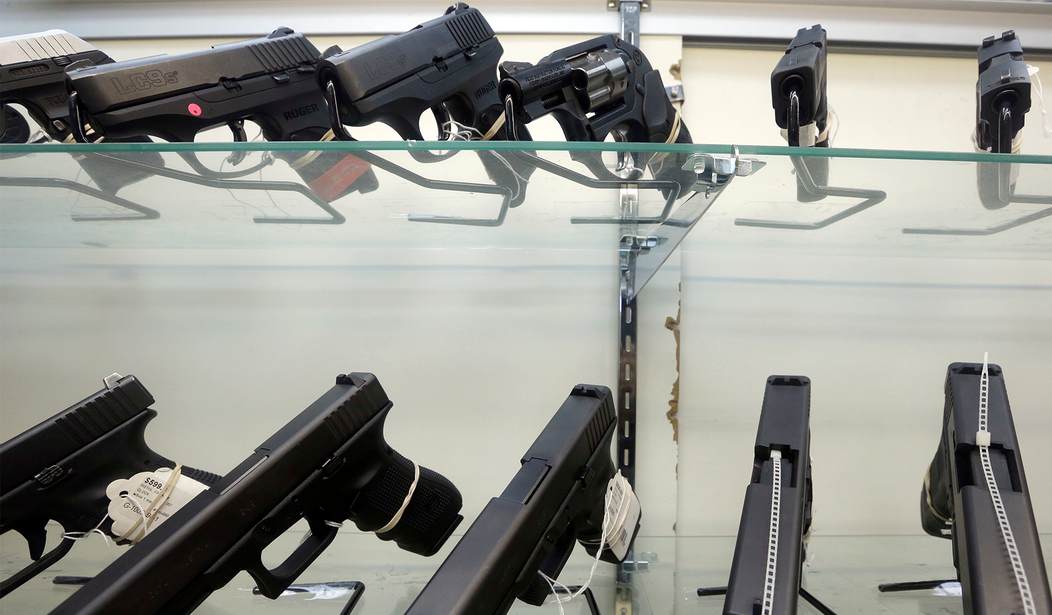The Associated Press claims to be an unbiased journalistic organization dedicated to getting the fact straight.
In a free society, they can most definitely claim that.
However, a simple look at some of their reporting would suggest that they don't make a lot of effort to live up to that claim. However, a recent piece from the AP involved such an egregious issue that the Second Amendment Foundation is demanding they make a correction.
The problem is that the AP has apparently refused to do so.
From SAF's Lee Williams writing at The Gun Writer:
An AP story published earlier this month titled “Why mass shootings and violence increase in the summer,” contained errors of fact and fake data. It was written by AP correspondent John Seewer, who according to his bio writes about “bizarre, crazy and interesting happenings in northern Ohio and beyond.”
“The Gun Violence Archive, which tracks mass shootings involving four or more people regardless of whether they died, shows June, July, and August have had the highest total number of mass shootings over the past decade. The lowest totals were from December through March. Independence Day topped the list with 58 mass shootings over the last 10 years — closely followed by July 5, according to the archive.” Seewer wrote.
His story also claimed teens with idle time on their hands, alcohol consumption and a lack of air conditioning can cause mass shootings.
We have debunked the Gun Violence Archive more than two-dozen times for its anti-gun bias and its fake data. Seewer should have known this. A simple Google search would have shown there were significant problems with his main data source.
He also could have compared and contrasted the GVA numbers with a database maintained by Northeastern University, USA TODAY and his employer, the Associated Press. The two datasets are vastly different. According to the Gun Violence Archive there have been 284 mass shootings in 2024. The AP database says there have been 20 mass killings, of which 14 were shootings. Seewer actually cited both databases in the story but ignored the vast differences in their numbers.
...
The Second Amendment Foundation sent a correction request to the AP via a portal on their website. The request included a link to Seewer’s story, as well as previously published information about the Gun Violence Archive.
“Thank you for your comment to our newsroom. If relevant, someone will get back to you as soon as possible,” The AP said in an automated email reply.
The AP has not commented further. The story is still available on the AP’s website and has not been corrected.
And, frankly, it won't be.
As Williams notes, though, the AP has its own database of mass killings, which is a far better tool for AP writers to use. Frankly, it's more useful from a journalistic perspective than GVA's could ever dream of being. Seewer was clearly familiar with the AP's database, too, as he apparently makes reference to it as well.
When they sling around these numbers, it's nothing more than anti-gun propaganda masquerading as statistics. The Gun Violence Archive likes to use a loose definition as a means of inflating the numbers of shootings, knowing good and well that people will conflate the shootings they count with things like Parkland and Uvalde.
The kicker? There's one simple reason why there are more GVA-defined shootings during the summer than at other times of the year. There are more people out at various times than many other times of the year.
For example, school's out, so teenagers are running around. You don't have the brutal cold of, say, a Michigan or Chicago winter to deal with. A lot of places outside of the Deep South don't have as much air conditioning as we do here in Georgia. All of this contributes to more people being out and, as an extension of that, more people are going to gather together.
If someone wants to settle a score with another person, doing so in the summer means they're more likely to be around others, which means shooting indiscriminately is far more likely to result in additionally people being shot. It's not rocket science.
Yet the problem is that what most people think of as a mass shooting isn't nearly as common as many think. The AP wrote a story that used a misleading statistic and when they were called on contributing to misinformation by not looking at the GVA numbers critically, they simply refused to make the corrections.
Williams notes that the problem with this is that the AP stores go all over the place via the organization's wire service. A lot of newspapers publish AP stories, which means wrong information there flourishes far better than a simple mistake in a local paper might.
The fact that they've refused to correct it is troubling.
What it's not, though, is surprising. It's really just par for the course.








Join the conversation as a VIP Member